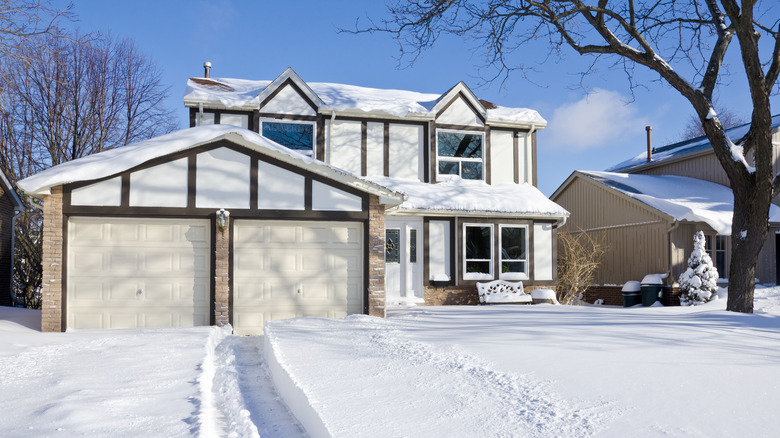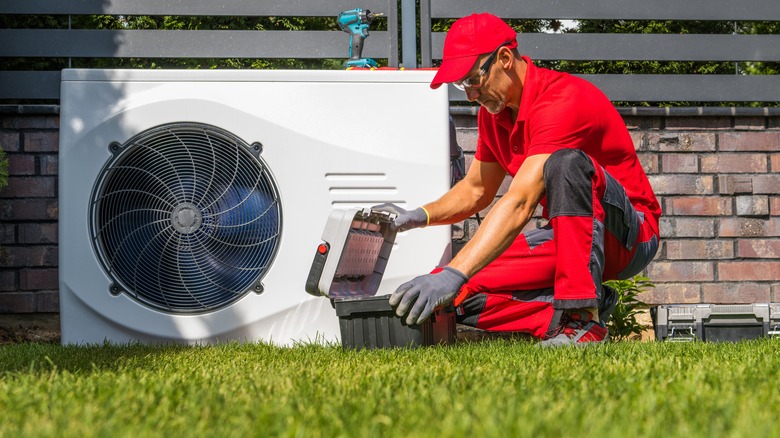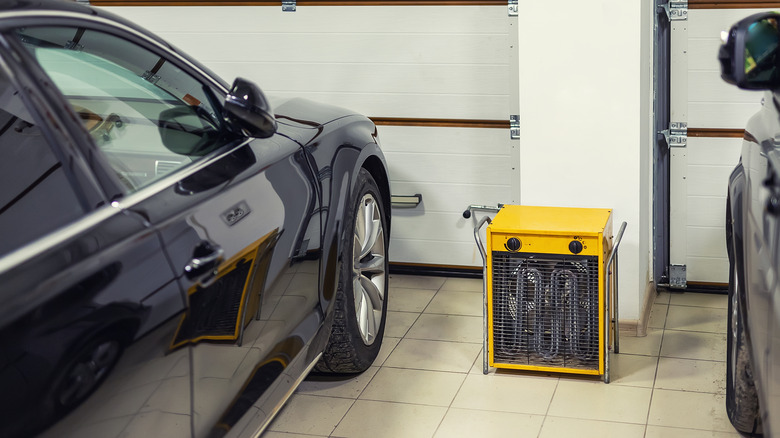How To Warm Up Your Garage During Freezing Cold Winters
If your garage serves a purpose beyond just parking — maybe as a workshop, a fitness zone, or a sanctuary for your hobbies — its usual chilliness can be more than just a minor inconvenience. It can actually hinder your activities. But here's a bit of uplifting news: There are multiple strategies to turn this traditionally frosty area into a snug, inviting retreat even in the heart of the freezing winter months. Simple solutions, like installing insulation, using portable heaters, or even adding a heat pump, can make a huge difference.
You see, the reason your garage feels more akin to a walk-in freezer than a cozy part of your home boils down to a few basic design choices. Most garages are not built with the same care for comfort as the rest of your home, often missing out on crucial insulation and heating systems. While you're nestled comfortably in your warm living room or bedroom, your garage is left to brave the cold — quite literally. But it's not all about the absence of insulation or heating systems; factors like where your garage is located on your property may influence how cold it gets as winter sets in. Your flooring is another factor — concrete floors, for example, can get extremely cold. Yet, don't let this dampen your spirits. With the right measures, transforming your garage from a frosty no-go zone into a warm, welcoming part of your home is totally doable.
Heating up with heat pumps: A cozy solution for your garage
Heat pumps present a fantastic solution to make your garage a warmer and more inviting space during the winter months. They're not just efficient; they're versatile and can cater to different garage sizes and layouts. Heat pumps work by transferring heat from the outside air into your garage. This might sound a bit counterintuitive — getting heat from cold winter air — but modern heat pumps are incredibly effective at this, even in low temperatures. This direct transfer of heat means less energy is wasted, making ductless mini-splits a cost-effective option in the long run. There are different types of heat pumps to consider, each with its own set of advantages. For instance, ductless mini-split heat pumps are a popular choice. They are easy to install since they don't require any ductwork and are great for directing heat precisely where you need it.
Portable heat pumps offer another layer of convenience. If your garage use varies or you only need to heat specific areas at different times, a portable unit can be moved around to suit your needs. Then there's the window heat pump, which is an all-in-one heating and cooling solution. These units fit into your garage window like a traditional window air conditioner, making installation straightforward. They're particularly useful if you live in a region with moderate winters and don't want a permanent installation.
Boosting garage warmth with heaters and insulation: your go-to guide
Beyond using heat pumps, you can also do wonders to warm up your garage with the help of heaters and proper insulation. Heaters come in various types, each suited to different needs and spaces. Let's start with radiant floor heating. This innovative system involves installing heating elements under your garage floor. The beauty of radiant floor heating lies in its ability to provide consistent, comfortable warmth from the ground up. It's like walking on a gently heated surface — ideal if you spend a lot of time working on projects in your garage. Plus, it's an energy-efficient method, as it minimizes the loss of heat. Convection heaters are another popular choice. These heaters work by warming the air in the room, which then rises and heats the space. Available in various sizes and capacities, convection heaters can accommodate garages of all dimensions.
However, heating your garage is just part of the equation. To truly keep the cold at bay, insulation is key. Insulating the walls, especially the garage door, can significantly reduce heat loss. Garage doors are often the primary culprits for letting in the cold, so adding insulation panels can make a noticeable difference. Don't forget about sealing any cracks and gaps. Even the smallest openings can let in cold air and let out the warmth you've worked so hard to generate. Use weather stripping or caulk around windows and doors to combat this issue.


